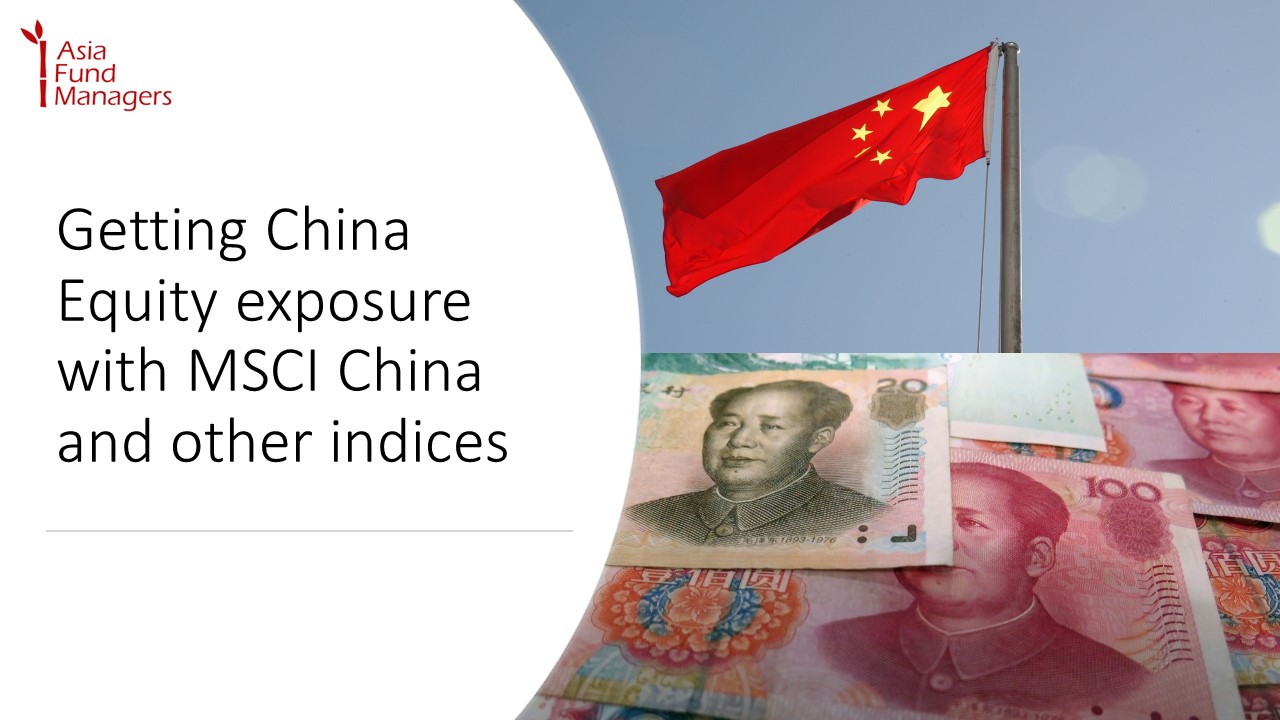MSCI China Indices - Methodology for Tracking Stock Movements - PowerPoint PPT Presentation
Title:
MSCI China Indices - Methodology for Tracking Stock Movements
Description:
The MSCI China indices track the performance of a group of equity instruments over time using the MSCI Global Investable Market Indexes (GIMI). This is done by capitalising on the Price Adjustment Factor (PAF) and the Index Divisors. MSCI country and regional equity Indexes are calculated in local currency as well as in USD. Visit: – PowerPoint PPT presentation
Number of Views:1
Title: MSCI China Indices - Methodology for Tracking Stock Movements
1
Getting China Equity exposure with MSCI China and
other indices
2
Brief introduction to Chinese equities
- Historically, investing in Chinese equities has
been a complex undertaking, off-limits to many
foreign investors. But the market is gradually
opening up. - There are several share classes of Chinese
equities. Companies incorporated in the Peoples
Republic of China can issue A-shares, B-shares
and H-shares. - The main differences between these share classes
are the listing location and the currency in
which the shares are traded.
3
Brief introduction to Chinese equities
- Other types of Chinese stocks exist as well,
representing shares of Chinese companies
incorporated and exchanged outside of China. - Until recently, the onshore Chinese market,
A-shares and B-shares, has been mostly off-limits
to foreign investors. - However, various programmes introduced by the
government over recent years offered foreign
investors an opportunity to participate in the
onshore market.
4
MSCI China Indices
- MSCI indices are widely used by the global
investment community. Driven by the institutional
demand for the asset class, MSCI has been
steadily increasing the representation of China
A-shares in its global indices. - Since MSCIs initial inclusion announcement in
2018, Chinese onshore equities have experienced
billions of dollars of foreign capital inflows.
5
MSCI China Indices
- MSCI has several indices that can be used as a
proxy for Chinese equity exposure and
performance. The MSCI China Index and the MSCI
China All Shares Index are the most common. The
major difference between the two is the extent of
inclusion of A-shares in the investment universe.
6
MSCI China Indices
- While the MSCI China Index has a cap on A-shares
inclusion, the MSCI China All Shares does not.
While this might seem like a minor difference, it
has a substantial impact on the composition. For
example, Consumer Discretionary, Communication
Services and Financials make up 64.32 of the
MSCI China Index. - MSCI China All Shares Index offers more
diversified exposure, with the top 3 sectors
representing 48.52 of the index, followed by
Consumer Staples and Technology both having over
9 allocation.
7
Getting exposure to Chinese equities
- For investors looking to allocate capital to
Chinese equities, there are two simple and
effective options. One is through an ETF tracking
one of the major indices. - Another option is to use an actively managed
mutual fund. Active management could be
particularly effective in a market like China.
8
Read more at
www.AsiaFundManagers.com
Find us on Social!































